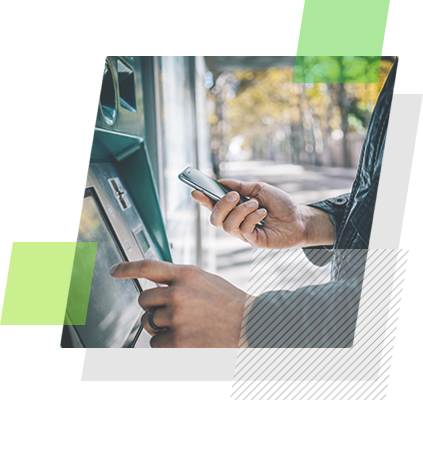Banking Services vs. Banking Benefits
The Difference Makes a Big Difference for Your Customers
Shifting my primary point of view from a banking product's features, to the benefits it gives banking customers, took some seriously rigorous training when I first joined the industry. I'm a seasoned product marketer now, but I still practice this habit every day, and I can still use constant reinforcement. For most people not in marketing and product management circles, thinking this way is often not habitual, and the benefits not well-understood.
Being clear about this difference is at the heart of competing successfully in today's volatile financial environment. It's at the heart of creating memorable customer experiences. It helps you ask better questions—and get better answers. It helps you make better decisions for your institution, for each individual customer, and everything in between. It's the difference between having wonderful strategic goals, and turning them into practical results.
This exercise will help you bring others on board and shift their thinking, and it's a good practice for anyone in a financial institution.
Let's start with the basics. Banking customers have about four basic needs:
- Transactions: People and businesses continuously receive and spend their money, and need to handle this flow, day in and day out.
- Borrowing: People and businesses need to borrow money for things and services, large and small, short and long term.
- Saving: People and businesses need to accumulate money and assets to use later, and this accumulation to earn more if possible.
- Decisions: People and businesses constantly need to make financial decisions—what to spend, when to save, how to pay, how to invest, whether they can afford something, ways to minimize taxes, where to store their family silver or their bearer bonds.
The Value of Simplicity
To these four basics, I propose a corollary: simplification. Or maybe, effortlessness. People and businesses need to keep track of all those transactions, loans, savings and decisions. This can quickly become burdensome. Any financial institution that isn't focused on simplifying their customers' lives is probably off-track. As web marketing expert Michelle Brown said in a recent article, "Why Can't Banking Be Easier Than Buying Cereal?"
Credit card X is offering rebates on groceries this month, so I’ll use that for food, and pay the bill from my credit union Y online money market account that’s linked to it; then later I’ll have to transfer from my checking account at bank Z where my company deposits my paycheck, to make my money market account whole again. Meanwhile, I’ll need to get cash from the payday place down the street, because I don’t want to risk maxing out credit card X before I get it paid off—and bank Z charges too much for their ATM anyway—when it’s even working. Oh, and I gotta keep track of when and how much the electric company is taking out of my account this month so I won’t overdraw—those fees are really killer. I wonder if I can afford to go out for dinner?
These days, there are countless providers (think branches and online brokerages and payday lenders and even retailers), endless transaction vehicles (like checks, cards, wallets, p2p, transfers) and multiple "locations" (online, mobile, and physical). How many bank accounts do people and businesses have? How many investment accounts? How many different providers? How many credit accounts and loans? And how much time and effort and uncertainty does it take to wrangle all this?
A couple I know has eight deposit accounts spread over a traditional bank, an online bank, a local credit union branch and a credit union eight states away. They have four credit cards, and only one is from one of their own financial institutions. They also have four debit cards, three store cards, two digital payment accounts (or maybe it's three now), and a car loan. Plus retirement accounts online, through a financial manager, and with two employers. Their little side hustle adds its own accounts and payment options. At least a quarter of their email, and half their physical mail, are about financial transactions and services. And they are a median-income household, not wealthy at all, just managing.
First Questions
Financial institution decision-makers ponder whether to open or close branches, how to make their digital services compliant, how to integrate all their different technologies. All very important matters, by the way. But for customers, it isn't about branches or rules or technologies, it's about adjacency. Here we have a customer. This customer has needs. What is adjacent to these needs, from their point of view? Here are some things they're thinking about:
How can I find out about all my options when I need this specific financial service?
What’s the easiest way to accomplish a transaction—the shortest, straightest line from A to B?
Can I get my payment/wire transfer done in time, even overseas, without paying an arm and leg?
Who do I trust to give me good service, not charge me too much, and keep my money (and information) safe?
How do I get help when I have a problem?
The first question we should ask isn't whether to have more or fewer branches, or offer this or that service. The first question is, what does a customer need look like, and how will I know it when I see it? What are all the ways it can be addressed, and what works about them? The couple I described earlier needs fewer account and relationships, with faster ways to shift from a call center to a smartphone, to a branch, even mid-transaction, and some personalized advice and promotions, plus specialized small business features right in the flow.
Now you can start asking how many of those needs you can fulfill, and do it well enough that the customer will stick around, and maybe turn to you first with his/her next need.
And by the way, once you are clear about the benefits, you've also got the big picture of what things like "open technology" and "omni-channel integration" are really all about.









